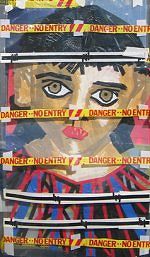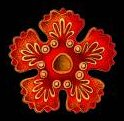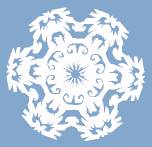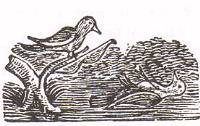
Here are some pictures of a few other things that took my fancy at Floriade – I like the roving entertainment more than the massed European flowers.
There was a rainbow serpent swimming in Nerang Pool, designed and created by Aeon Mortimer. Its a big inflatable, and apparently it can spray a fine mist of water from its spines, creating rainbows in the air around it. Nice idea. Aeon’s puppet play The Great Big Story Book was also there. Designed as a giant pop-up book, it tells a version of the dreamtime story of Tiddalik the Frog, with puppet creatures stepping out of the pages of the book. (My favourite picture book version of Tiddalick is What Made Tiddalik Laugh by Joanna Troughton. It has lovely illustrations, and the kind of lame jokes that pre-schoolers love because they are so lame.)
I was also enjoyed catching up with Jigsaw‘s Flotsam and Jetsam, a one-woman show acted by Chrissie Shaw, and based on collected stories of children who lived on lighthouse islands in Australia. I particularly liked Mrs Ingram’s windswept dress that could be slipped into and out of in a flash.
Icarus Performance Troupe from Sydney were lots of fun, jogging about the gardens as giant muscle-bound lifesavers. They blew their whistles, bossed the crowds into swimming between the flags, and struck stong-man poses (complete with appropriate grunts and roars!) at the drop of a hat.
The flock of 100 black swans made from old rubber car tyres interested me not so much for what they were, but as a reflection on the fact that when they were common garden decorations in the 50’s and 60’s (or earlier) they were always painted white. I suppose they were part of that era’s acceptance of the idea of England as the home. As reported in the Canberra Times, the swans were made by Greg Hedger of Limestone Creek Enterprises:
‘Mr Hedger said each swan took about an hour to fashion – once he had the design sorted – plus a bit of time for painting. The tyres were heated by engine exhaust or in a glasshouse so the rubber was easier to cut and twist inside out.
The tyres were sourced from a company in Melbourne, which was believed to have held a stockpile for use as swings. While the steel belting in a modern radial tyre is good for motorists, it does not wear safely in children’s swingsets. Neither is it suitable for swan sculpting, because it’s too difficult to slice.
Sizes ranged from 12- and 13-inch car tyres to truck tyres. Mr Hedger’s offerings have been planted with a new variety of pansy, named Waterfall.
After the festival, Mr Hedger intends to take the swans under his wing. While the Floriade examples are under offer – Mr Hedger’s wife has her name on two – he’ll take up the slack afterwards. He’s already had orders from ladies in Burra and Orange and a school in Armidale. He had no idea what the swans would sell for, but would probably charge less than $100 apiece.’
There is an article about the traditional Australian art of sculpting swans from old tyres here.
Finally the Scarecrow Competition :-). I have a soft spot for the scarecrows because they come so much from the everyday community, and because such a wide interpretation of the concept of a scarecrow is acceptable. Here are some photographs of just a few of them that took my fancy:
Domestic Goddess (Woman of Steel, With Forked Tongue, Ready to Spring) by Barlin Event Hire
In Bega Everyones Dreaming of Rain, by Merimbulla Rudoplh Steiner School. The Bega Valley down on the south coast is dairy country, and must be feeling the drought as much as any of us.
French Frog by Telopea Park School. Appropriately, Telopea is a bi-lingual English/French public school.
Bunyip, by Hindmarsh Student Group (?)
Mermaid, by Braidwood Preschool Association. Their use of tin lids for scales is very effective, just as good as the CDs that many others used, for instance in the following one.
Fish, by Waniassa (?) Learning Support Unit
Refugees and Asylum Seekers don’t want a Red Carpet Welcome, by Amnesty International. I’d like to think they were prompted by my Howard last year.
Person in the Bath, by Radford College
Dragon, by the O’Connor Co-operative School. A long rhapsody in plastic!

 I’ve always had a feeling that the time around 1860 was a watershed in many ways. Apart from anything else it was when
I’ve always had a feeling that the time around 1860 was a watershed in many ways. Apart from anything else it was when  Amazon UK has a couple of copies of the book
Amazon UK has a couple of copies of the book 
 An exhibition by two Scandanavian artists, Michael Elmgreen and Ingar Dragset, is causing a bit of a stir at London’s
An exhibition by two Scandanavian artists, Michael Elmgreen and Ingar Dragset, is causing a bit of a stir at London’s  I got chatting to someone out at Walker Ceramics in Fyshwick yesterday, who was telling me about an installation that took place in the
I got chatting to someone out at Walker Ceramics in Fyshwick yesterday, who was telling me about an installation that took place in the 

